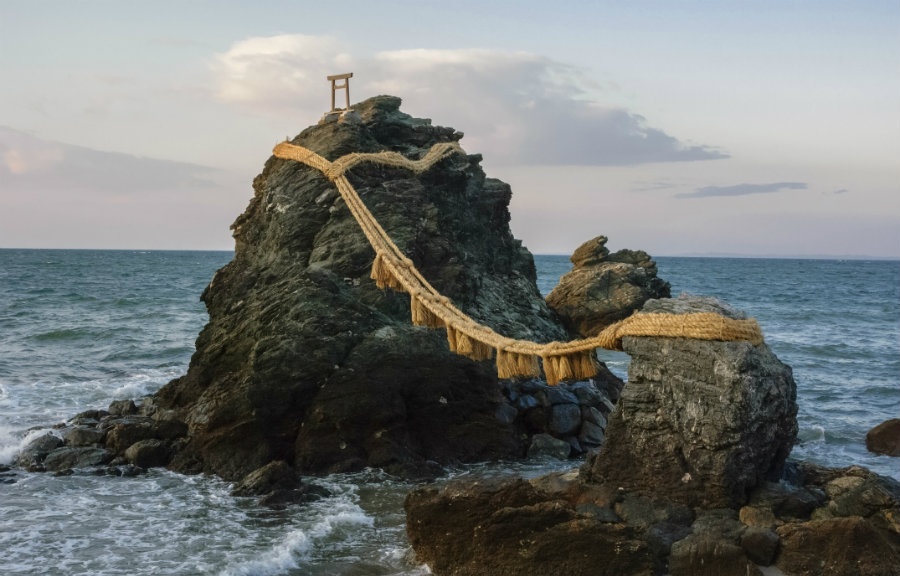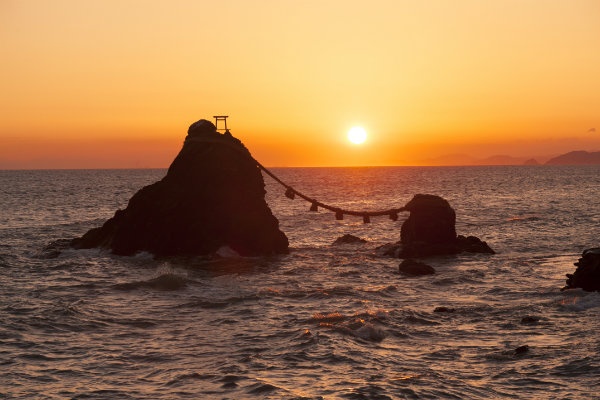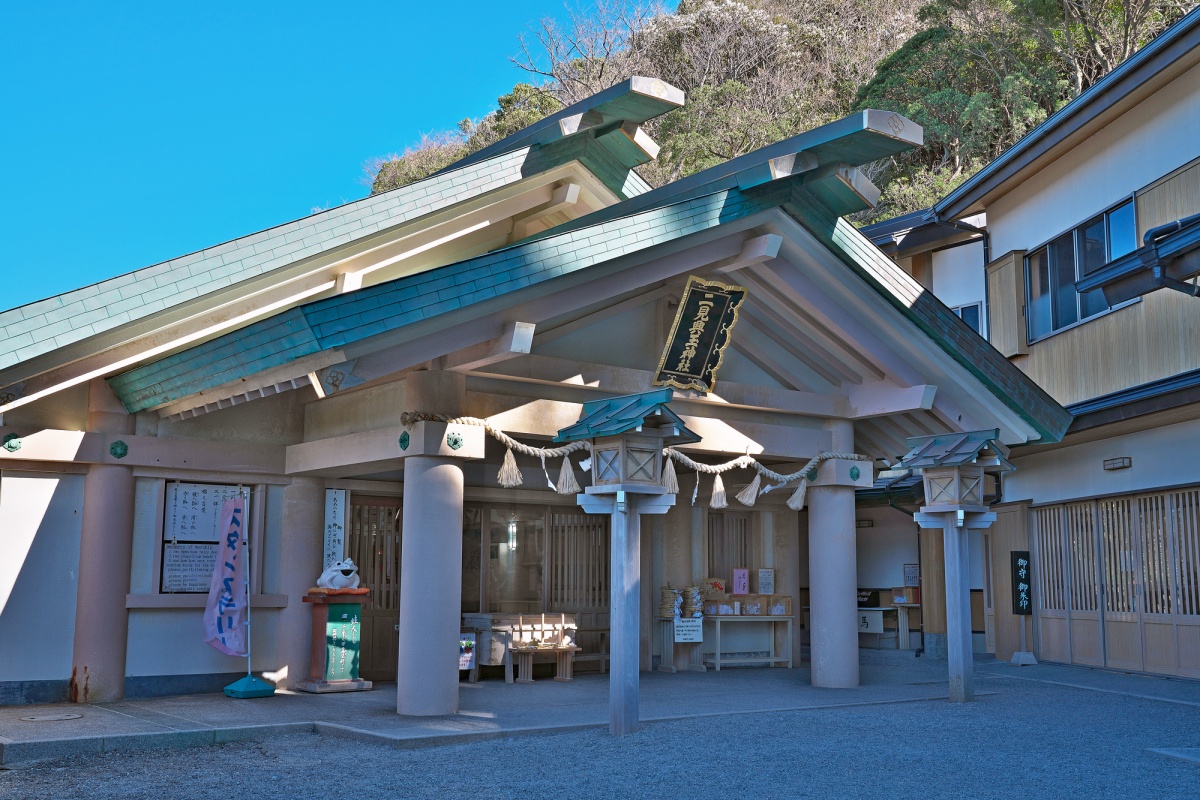The Wedded Rocks: Meoto Iwa

Meoto Iwa (夫婦岩), known as the “Wedded Rocks” or “Husband and Wife Rocks” are a pair of sacred rocks in the sea off Futami, a small town that's part of Ise City in Mie Prefecture. The rocks are located near Ise Grand Shrine, which is the most important and sacred Shinto shrine in Japan.
By John AsanoMeoto Iwa
The two rocks are joined together in matrimony by a sacred Shinto straw rope called a shimenawa. The ancient Shinto custom of worshiping stones is called iwakura, and these places are considered pure and sacred by worshipers, as well as spots where kami, or Shinto gods, are invited to descend.
According to Shinto beliefs, these particular rocks represent the union of the central deities in the Shinto creation myth, Izanagi (the male deity) and Izanami (the female deity). The rocks, therefore, represent and celebrate the union of man and woman in marriage. The larger of the two rocks is said to be the husband (Izanagi) and has a small Shinto torii gate at its peak, while the smaller rock represents the wife (Izanami).
The sacred rope is massive, and weighs over a ton. It's replaced three times a year in a special Shinto ceremony held in May, September and December.
The best time to see the sacred rocks is at dawn during the summer, when the sun appears to rise between them, or in the evening of the winter solstice, when the moon rises between them. On a clear day, you can also catch a glimpse of Mount Fuji, which is visible off in the distance.
Futami Okitama Shrine
Not far from the Wedded Rocks is Futami Okitama Shrine, which is dedicated to the gods Sarutahiko and Ukanomitama. In Japan's origin story, Sarutahiko guided Ninigi-no-Mikoto, grandson of the sun goddess Amaterasu, to Earth, where he became grandfather of the nation's first emperor, Jimmu. Ukanomitama, on the other hand, is typically depicted as a goddess associated with food and agriculture.
The shrine is a popular tourist attraction with its numerous frog statues pulling in the crowds with their cuteness. The frogs are a kind of charm for bringing people or things back safely, since in Japanese the term for frog is kaeru, which also means "to return." The shrine is also popular with couples, who visit to pray for luck in love from nearby Meoto Iwa.





